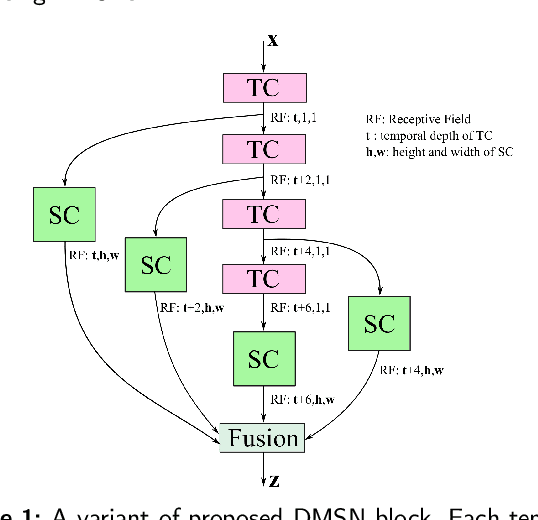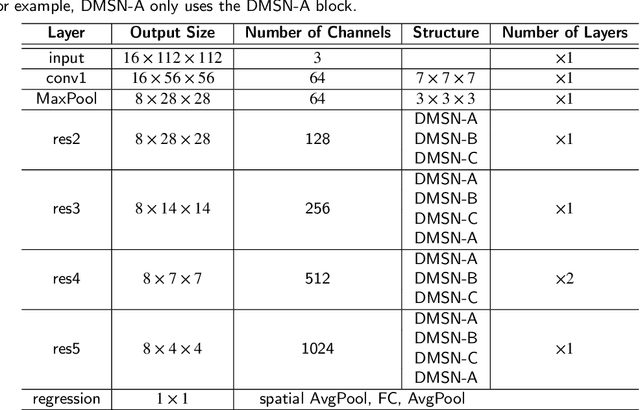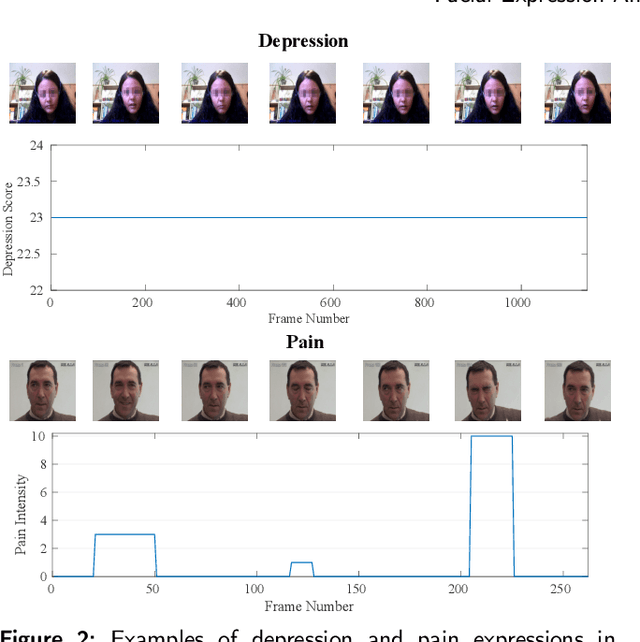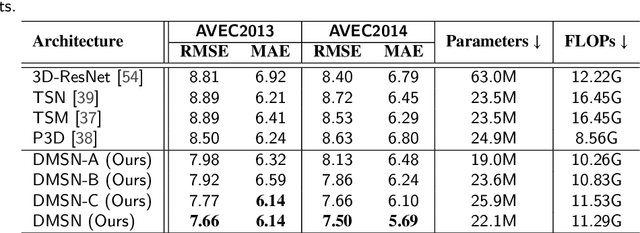Facial Expression Analysis Using Decomposed Multiscale Spatiotemporal Networks
Paper and Code
Mar 21, 2022



Video-based analysis of facial expressions has been increasingly applied to infer health states of individuals, such as depression and pain. Among the existing approaches, deep learning models composed of structures for multiscale spatiotemporal processing have shown strong potential for encoding facial dynamics. However, such models have high computational complexity, making for a difficult deployment of these solutions. To address this issue, we introduce a new technique to decompose the extraction of multiscale spatiotemporal features. Particularly, a building block structure called Decomposed Multiscale Spatiotemporal Network (DMSN) is presented along with three variants: DMSN-A, DMSN-B, and DMSN-C blocks. The DMSN-A block generates multiscale representations by analyzing spatiotemporal features at multiple temporal ranges, while the DMSN-B block analyzes spatiotemporal features at multiple ranges, and the DMSN-C block analyzes spatiotemporal features at multiple spatial sizes. Using these variants, we design our DMSN architecture which has the ability to explore a variety of multiscale spatiotemporal features, favoring the adaptation to different facial behaviors. Our extensive experiments on challenging datasets show that the DMSN-C block is effective for depression detection, whereas the DMSN-A block is efficient for pain estimation. Results also indicate that our DMSN architecture provides a cost-effective solution for expressions that range from fewer facial variations over time, as in depression detection, to greater variations, as in pain estimation.
 Add to Chrome
Add to Chrome Add to Firefox
Add to Firefox Add to Edge
Add to Edge